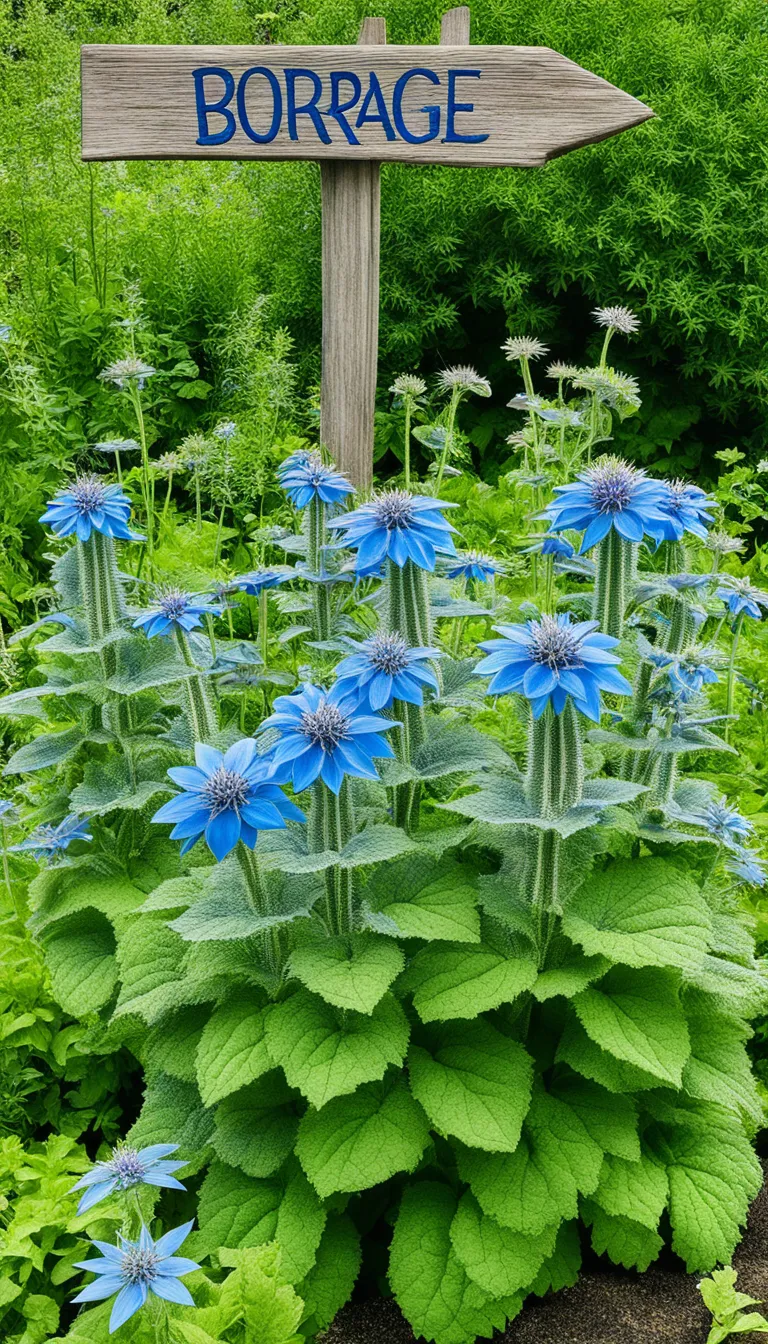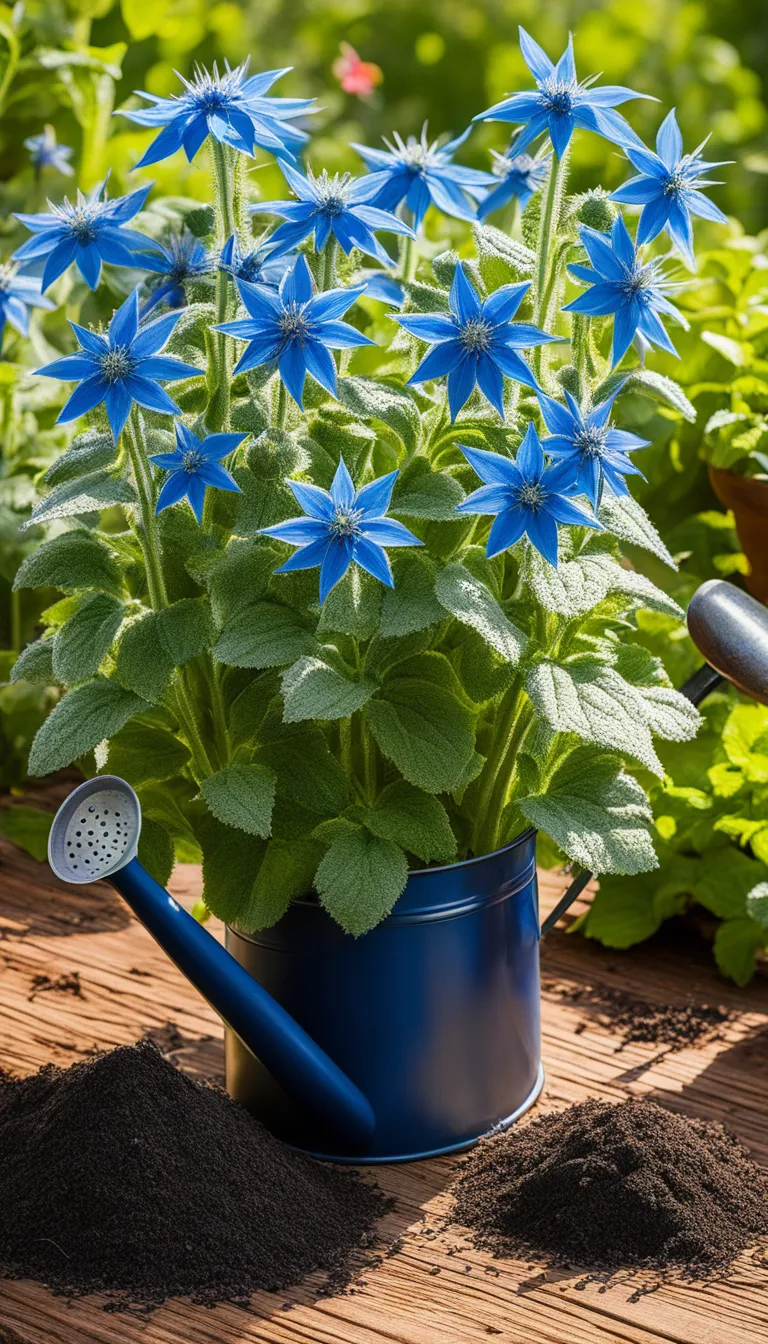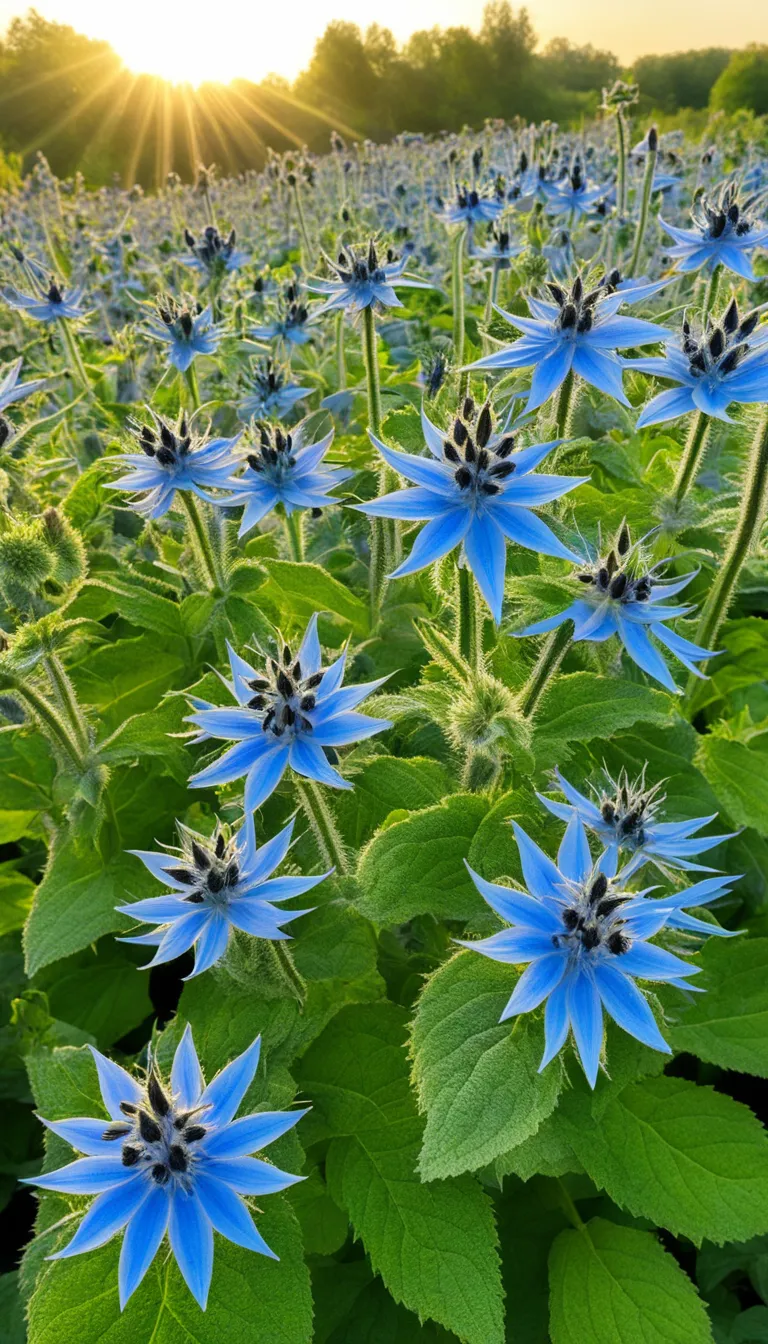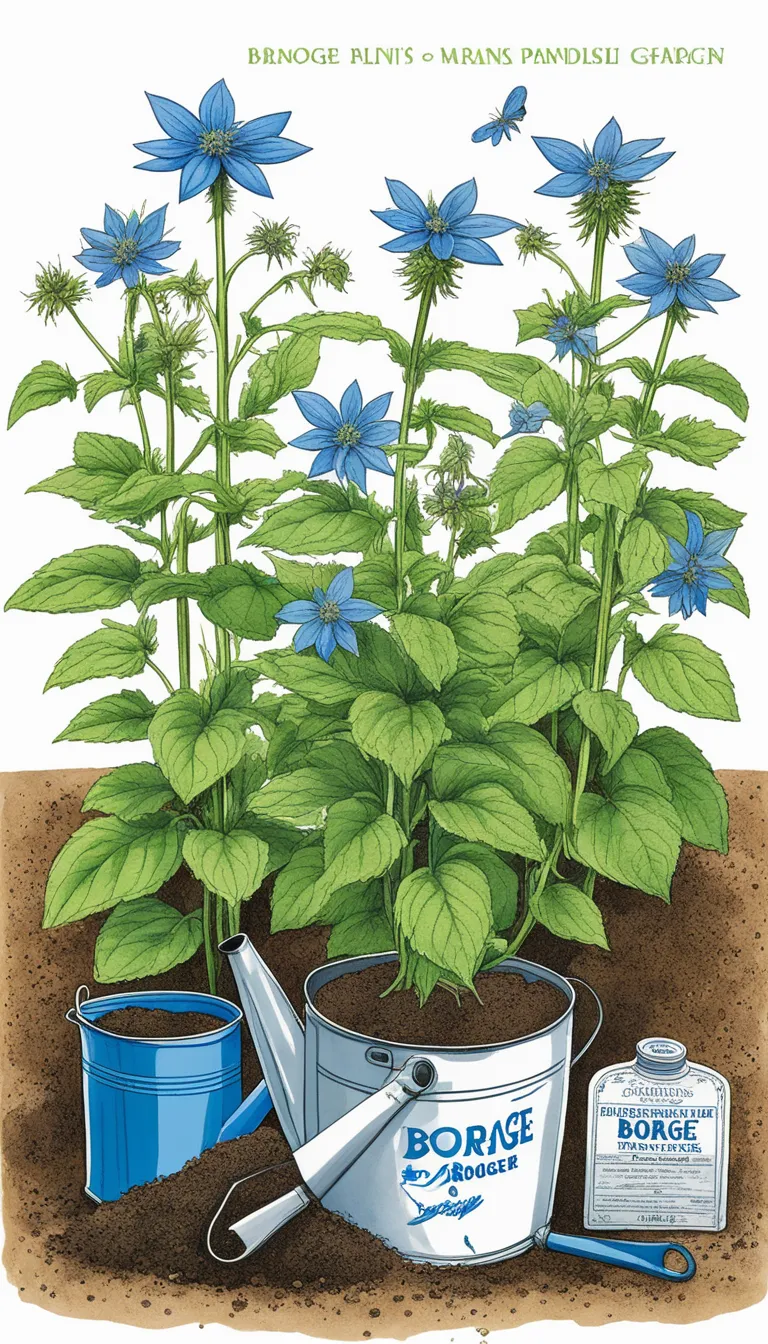Discover the world of borage, a versatile herb known for its vibrant blue flowers and cucumber-like flavor, widely used in culinary and medicinal applications. The sight of borage, also known as starflower, can be a surprise explosion of color in any garden, with its star-shaped blooms beckoning both the eyes and the palate. But what exactly is this herb that has captured the hearts of gardeners and chefs alike?
Borage (Borago officinalis) is more than just a pretty face; its historical uses span centuries, with ancient civilizations recognizing its potential in both the kitchen and the medicine cabinet. The herb’s leaves and flowers carry a refreshing taste reminiscent of cucumbers, making it a delightful addition to salads, drinks, and garnishes. Are you ready to transform your culinary creations with a touch of borage’s unique flavor?
Beyond its culinary prowess, borage is also celebrated for its medicinal benefits. Rich in gamma-linolenic acid (GLA), a type of Omega-6 fatty acid, borage has been used to soothe inflammation, improve skin health, and even as a remedy for respiratory conditions. With such a plethora of uses, it’s no wonder that borage is a cherished herb among enthusiasts.
But wait, there’s more! Borage isn’t just beneficial for humans; it’s a haven for pollinators like bees. Its nectar-rich flowers are a magnet for these crucial garden visitors, making borage a must-have for any eco-conscious gardener. Feeling intrigued? Stay tuned as we delve deeper into the world of borage, exploring its care, varieties, and the explosive surprise it brings to gardens and plates alike!

What is Borage?
Discover the world of borage, a versatile herb known for its vibrant blue flowers and cucumber-like flavor, widely used in culinary and medicinal applications.
Borage, also known as Borago officinalis, is a wonder of the herb world. Have you ever seen a garden with star-shaped blue blossoms that seem to sparkle with their own inner light? That’s borage for you! It’s not just a treat for the eyes; borage has a history rich with culinary and medicinal uses that date back to ancient times. Gardeners love it, and chefs can’t get enough of its fresh, cucumber-like flavor. But what exactly is this plant that bridges the gap between beauty and utility?
Originating in the Mediterranean region, borage has made its way into hearts and gardens across the globe. It’s an annual herb, which means it completes its life cycle in just one growing season. But don’t let that fool you; in that short time, it can add a burst of color and flavor to any garden or dish. The leaves and flowers of borage are both edible, making it a dual-purpose plant. It’s like nature’s own two-for-one deal!
Let’s talk about its historical uses. Borage has been a staple in herbal medicine, believed to lift the spirits and promote courage. Soldiers of old would drink wine infused with borage before heading into battle. It’s also been used in traditional remedies to soothe inflammation and various ailments. Today, it continues to be a symbol of bravery and is a popular choice for companion planting, attracting pollinators like bees to the garden.
- Edible Parts: Leaves and Flowers
- Flavor Profile: Similar to Cucumber
- Historical Significance: Used to inspire courage and treat ailments
- Gardening Benefits: Attracts pollinators
So, whether you’re looking to add a pop of color to your garden, a fresh twist to your salads, or a homegrown remedy to your medicine cabinet, borage is a plant that truly has it all. It’s a burst of surprise and an explosion of utility, wrapped up in a star-shaped flower. Are you ready to make some room for borage in your life?

How to Care for Borage?
Caring for borage is a delightful task for any gardener. This resilient herb thrives with minimal fuss, but there are some key tips to ensure your borage plants are the envy of the neighborhood. Let’s dive into the essentials of borage care:
Location and Soil: First things first, borage loves the sun! Plant your borage in a spot where it can bask in full sunlight. The soil should be well-draining and rich in organic matter. If you’re working with heavy clay, consider raising your beds or adding sand to improve drainage.
Watering: Borage isn’t too picky about water once established, but it’s important to keep the soil consistently moist during the seedling stage. Once your plants are mature, you can reduce watering, but don’t let them dry out completely—especially during hot spells!
Fertilizing: While borage isn’t a heavy feeder, a little compost or a balanced fertilizer can give it a boost. Apply at the beginning of the growing season to support vigorous growth.
Pruning and Maintenance: To maintain a bushy and productive plant, pinch off the tips of young borage plants. This encourages branching and more flowers. Also, be on the lookout for spent flowers and remove them to prevent excessive self-seeding—unless you want a borage explosion in your garden!
Pest and Disease Management: Borage is generally pest-resistant, but keep an eye out for common garden pests like aphids. A strong blast of water or insecticidal soap can help manage these critters. As for diseases, good air circulation around your plants helps prevent issues like powdery mildew.
Here’s a simple care checklist for your borage plants:
- Plant in full sun and well-draining soil.
- Keep soil moist, especially for seedlings.
- Apply compost or balanced fertilizer at the start of the season.
- Pinch off tips to encourage bushiness.
- Remove spent flowers to control self-seeding.
- Monitor for pests and use insecticidal soap if necessary.
- Ensure good air circulation to prevent diseases.
With these tips, your borage will not only survive but thrive, offering up its beautiful star-shaped flowers and distinctive flavor for your kitchen and home remedies. Happy gardening!

What are the Borage Varieties?
When it comes to borage, also known as the starflower, there’s a delightful array to choose from. Each variety brings its own unique charm to the table, or more accurately, to the garden. Let’s dive into the world of borage varieties:
- Common Borage (Borago officinalis): This is the classic starflower, with its recognizable brilliant blue blooms and fuzzy leaves. It’s a hardy plant that thrives in temperate conditions.
- White-flowering Borage: For those looking for a twist on the traditional, this variety offers pure white flowers, adding a touch of elegance to any culinary creation or garden.
- Creeping Borage: Perfect for ground cover, this variety spreads across the garden, boasting smaller leaves and flowers, creating a lush green carpet dotted with blue.
Each of these varieties has its own growing requirements and flavor profiles, making them suitable for different purposes. Whether you’re looking to garnish a cocktail with a sprig of blue, infuse a salad with a cucumber-like zest, or simply add a splash of color to your garden, there’s a borage for you.
So, why not experiment with the different varieties of borage? Their combined beauty and utility are sure to cause a surprise explosion of delight in any gardener or chef’s heart!





